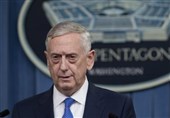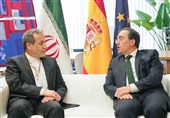White House Weighs Tougher Options on NAFTA, China Trade
TEHRAN (Tasnim) - US President Donald Trump is considering slapping customs tariffs on Chinese imports, and exiting NAFTA after several trade disputes with Canada, and two reports on trade with mainland China have highlighted America’s disadvantageous position in trade.
President Trump’s protectionist agenda might prevail over concerns of the US deepening trade deficits with mainland China, and Canada and Mexico. This despite last year the President has concluded several lucrative trade deals with Beijing, whilst making some progress in the renegotiation of NAFTA.
President Trump spoke with US trade representative Robert Lighthizer Saturday, discussing trade with mainland China, and the ongoing attempts to modify the 23-year-old NAFTA agreement in order to revitalize US manufacturing. The Trump administration is reportedly weighing slapping prohibitive customs tariffs on mainland China along with putting trade pressure on Canada and Mexico as well.
This comes on the heels of the Trade Department’s reports on steel imports – the lion’s share of which comes from mainland China – as well as Canada’s complaint to the World Trade Organization (WTO) against the US protectionist tariffs against its softwood lumber, Sputnik reported.
The latter has resulted in Russia’s lumber exports to the US surpassing Canada’s in dollar terms, and Ottawa claims the tariffs violate the WTO’s free trade rules.
"Canada’s new request for consultations at the WTO is a broad and ill-advised attack on the US trade remedies system. US trade remedies ensure that trade is fair by counteracting dumping or subsidies that are injuring US workers, farmers, and manufacturers. Canada’s claims are unfounded and could only lower US confidence that Canada is committed to mutually beneficial trade," Lighthizer said ahead of his meeting with President Trump.
The meeting between president Trump and trade envoy Lighthizer comes as the trade envoy prepares for the next round of NAFTA re-negotiation in Montreal. The US is taking a hardline stance in the talks, saying it would rather exit the trade pact than allow Canada and Mexico to continue taking advantage of the US market.
The White House didn’t provide details on the President Trump-Lighthizer meeting, with spokeswoman Lindsay Walters saying only that the President remains at his Mar-a-Lago resort in Florida.
Previously, the Trump administration expressed its concern of mainland China potentially violating intellectual property rights, using the technology brought by the US manufacturing multinationals for its own economic benefit. The US also has concerns over the cheaper Chinese steel dominating the US domestic market.
US steel mills have long struggled to compete, as unionized workers are a costly and low-productivity workforce. President Trump has mulled a 35-percent customs tariff or the imposition of quotas on the Chinese steel products. The decision on these restrictive measures is reportedly set to be made in the coming weeks.
“The flood of imports from China and other countries would negatively impact billions of dollars in Canadian exports to the United States, including nearly $9 bln in exports of steel and aluminum products and more than $2.5 bln in exports of wood and paper products," Lighthizer said.
The Commerce Department conducted its Section 232 probe into China’s steel imports in the US last year and submitted the results of the investigation to President Trump last week. Later this week, the Department of Commerce will submit a separate report regarding US aluminum imports and its effects on the nation’s manufacturing base and national security.
Industrial metal products are used in the aerospace sector, as well as in enormous industries such as construction, and are crucial to the output of companies like Lockheed Martin and Boeing.
The US has a separate feud with Canada and the EU regarding the failed Boeing-Bombardier deal, with the European enterprise Airbus entering the Canadian market as a consequence. This poses a threat of a trade war in the aeroplane segment – despite Boeing discussing a deal to acquire the Brazilian regional jet maker Embraer to make up for the Bombardier fallout.
China, on its part, reported an ongoing increase in its exports to the US, with December exports having slowed after an expansion the previous month.
Whilst the NAFTA negotiations have two more rounds to go, the future of US foreign trade is currently dependent of the White House’s decision on the two major issues. Should President Trump opt to slap tariffs or quotas, or both, on China, and exit NAFTA, the US is expected to pivot to Europe and Southeast Asia as its main foreign trade partners.






